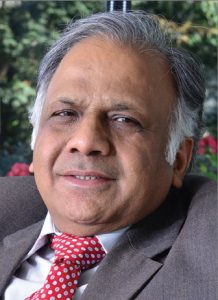
There has been a steady growth in biomass-based power capacity in India over the years, especially in the industrial space where affordable combined heat and power solutions have gained traction. Triveni Turbines, a manufacturer of industrial steam turbines, is actively capturing market share in this space with a growing captive power consumer base. In a recent interview with Renewable Watch, Arun Mote, executive director and CEO, Triveni Turbines, discusses the company’s offerings in the renewables space as well as its future plans…
Which segments does Triveni Turbines operate in?
Triveni Turbines is a leading manufacturer of industrial steam turbines in the sub-30 MW range globally. It designs and manufactures steam turbines up to 100 MW at its world-class manufacturing facilities in Bengaluru, and assists its customers in their after-market requirements through its global servicing offices. With installations of over 5,000 steam turbines across 20-plus industries, Triveni Turbines is present in over 70 countries around the world, generating more than 13 GW of power worldwide. The company offers robust back pressure and condensing steam turbine ranges to both industrial captive and independent power producers (IPPs) for power generation and heating applications.
In the renewable energy space, it supplies turbine solutions to sugar (bagasse), biomass (palm oil residues, wood pellets, rice husk) and waste-to-energy (WtE) (industrial and municipal waste) facilities. In the domestic market, captive power plants (CPPs), that is, sugar and biomass units, are driving the demand for steam turbines. These account for the largest market share followed by IPPs, that is, WtE facilities. Meanwhile, IPPs account for the highest market share in the export business, followed by CPPs. The company’s renewable energy installations are spread across India, Southeast Asia, Africa, Europe, and Central and South America.
What was the impact of Covid-19 on the company’s operations? What is the outlook for Triveni post pandemic?
While the company did suffer in terms of order booking growth, the situation was kept under control with focused digital initiatives taken to continue operations while ensuring the safety of employees. The domestic market has already gained traction and this financial year looks bright for the company. With expected improvement in the domestic business environment, the gradual opening up of trade and commerce, and a strong enquiry pipeline, the company is confident of returning to growth in its order book in this financial year.
What is your perspective on the evolution of cost economics in the biomass, cogeneration and WtE segments over the years?
The company provides renewable power solutions, specifically for sugar, palm oil, biomass and WtE facilities that use low pressure steam. In such cases, an extraction turbine is used that produces both heat and power. The cost of power generated through this process is 14-15 per cent lower than the cost of power generated through other renewable IPPs. The fuel used here is a thermal renewable resource and the power produced through this process benefits the customer throughout the day by addressing the combined heat and power requirements of the plant.
What technologies is the company planning to focus on in the near term? What are the areas of R&D and innovation?
On the technology side, the company continues to develop cost-competitive and increasingly efficient models with enhanced profiles to meet the global requirements. These include drive turbines for the petrochemical industry as per American Petroleum Institute standards. Our R&D also continues to be focused on alternative energy technologies, such as carbon dioxide-based cooling solutions and supercritical carbon dioxide power blocks, as compact footprint solutions for the energy market. The company’s initiatives include development of supercritical carbon dioxide micro-size turbo machinery for shipping and setting up of a test loop in association with a leading scientific institution in the country.
What are the company’s future plans in the renewable energy domain?
Globally, there is an increasing focus on the replacement of existing coal-fired power plants with clean fuel generation to reduce the carbon footprint. The global waste-to-energy market, including Asia Pacific, is expanding rapidly, owing to a significant increase in waste generation by the two big developing nations, China and India. This will create an opportunity for Triveni Turbines to supply steam turbines across the globe.
Bioenergy will remain the primary fuel going forward. The bioenergy industry turns many potential feedstocks into solid fuels, liquid biofuels and gaseous fuels, which are used to produce electricity, heat and transport fuels that are sustainable. The largest market for captive power generation globally is the industrial sector. As the demand for bioenergy-based CPPs in the country is expected to grow, there is a huge opportunity for Triveni Turbines, which operates in the industrial steam turbine domains.



